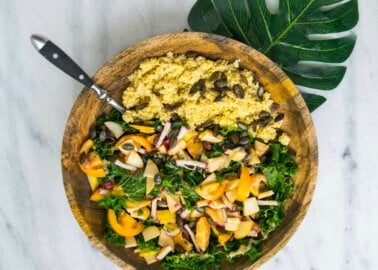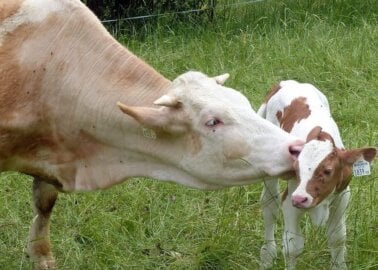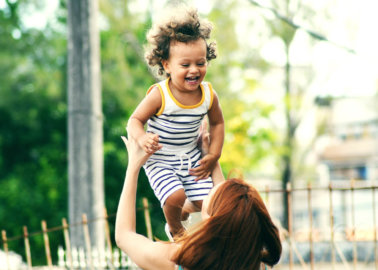Australian Bushfires: How You Can Help Animals
The bushfires in Australia have been devastating. Many humans, koalas, kangaroos, and other animals have lost their homes and even their lives to the flames – as of today, over 1 billion animals are believed to have been killed.
Photos and videos of charred animals – who were unable to escape the overwhelming blazes – are everywhere you look online.
This is the most distressing image I’ve seen today. A kangaroo burnt while no doubt trying to escape the Aussie fires. What can even be done? 😔 photo: Brad Fletcher pic.twitter.com/mKRJQsFJik
— Laura Walubengo (@lwalubengo) January 4, 2020
What You Can Do to Help
During the crisis, we’ve seen inspirational acts of bravery and compassion from firefighters and volunteers who are risking their lives to save humans and other animals affected by the fires. But you don’t need to run into burning bushland and rescue koalas to help – here’s what you can do even if you live on the other side of the planet:
Later this month, PETA Australia will be holding a vegan sausage sizzle in aid of Animal Rescue Cooperative, a volunteer-run charity that’s helping animals affected by the fires by collecting funds and resources and distributing them to where they’re most needed – including to groups rescuing injured wild animals and to shelters working to rehabilitate them. Check out its website, and look out for regular updates on its Facebook page.
As the saying goes, when no one is to blame, everyone is to blame. Here’s why we all need to take responsibility – and how we can help immediately:
This Is a Climate Crisis, and We Must Take Action Like Never Before
Many blame climate change for exacerbating the wildfires, which have already burned a territory larger than Denmark and the Netherlands – and almost three times the size of Wales. That’s a larger area than the recent Amazon rainforest and California fires combined. Around the world, prolonged heat and drought have extended seasonal wildfire periods.
But what’s fuelling the climate crisis? According to the United Nations, animal agriculture is responsible for a greater proportion of global greenhouse-gas emissions than all transportation.

As evidenced by the Australian bushfires and other climate catastrophes, the situation is so dire that the United Nations is calling for urgent and unprecedented changes now, including to our diet.
You can’t be a meat-eating environmentalist. The easiest way to fight the climate crisis is to go vegan right now. It requires zero governmental initiative and no promises from giant corporations. It only involves choosing to leave animal-derived foods out of your shopping trolley on that trip you’re already making to the supermarket.
Going vegan can help prevent animals from being burned alive in a bushfire or getting a knife across the throat in an abattoir.
It’s estimated that, at a minimum, about 1 billion animals have been killed in Australia’s fires. About the same number of land animals are horrifically slaughtered approximately every five days just so that people can eat their flesh.
 © Jo-Anne McArthur / We Animals
© Jo-Anne McArthur / We Animals
The Average Meat-Eater Is Responsible for the Use of 15,000 Litres of Water a Day
While authorities in Australia campaign to kill thousands of camels as they “drink too much water amid the wildfires”, animal agriculture has a far more significant water footprint.
It takes 72% more water to produce a litre of cows’ milk than it does to produce the same amount of soya milk. Go vegan today and you’ll reduce your water footprint by nearly 60%.

One-Third of the Earth’s Land Surface Is Used for Animal Agriculture
Exploiting animals for their milk, flesh, and eggs is pushing our natural environment and life on Earth to its limits: 60% of wild-animal populations have been lost since the 1970s, mainly because of habitat loss. It’s not just happening in Australia with koalas: wild animals are running out of space to live in and are going extinct at an alarming rate around the globe.

Despite this crisis, humans are still razing some of the most species-rich areas on Earth – including across Australia – in order to graze cows or grow soya that is fed to cows, chickens, sheep, and pigs. When we all stop eating meat, eggs, and dairy, global farmland use could be reduced by 75%.
The Best Time to Go Vegan Was Yesterday – the Next-Best Time Is Right Now
We have a great deal of power to change things if we harness it.
Before reaching for another beef burger, picture the cow slaughtered for it, strung upside down, desperately taking her last breaths before her throat is slit. Picture the koala who’s petrified and alone after losing his family and his home to the fires fuelled by animal agriculture.
Going vegan is a revolutionary action – it’s exclaiming, “We will not let this planet and countless sensitive animals die on our watch!”
Join the vegan movement today, and ask everyone you know to do the same. Life on Earth itself depends on it.



